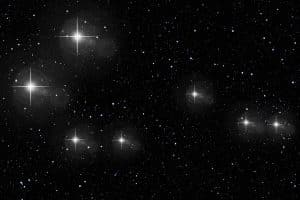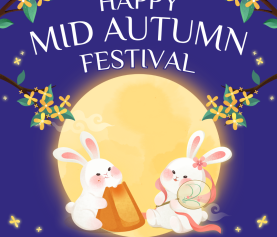It is that time of the year when we see the Seven Sisters shining brightly in the night skies. In both Astronomy and Astrology, this refers to the prominent cluster of stars in Taurus, known as the Pleiades. Although the cluster contains thousands of stars, only seven shine the brightest and can be seen with the naked eye.
This takes us to the mythology behind the Seven Sisters in both Greek and Chinese traditions.
In Greek mythology, the Pleiades were seven sisters—Maia, Electra, Taygete, Alcyone, Celaeno, Sterope, and Merope—daughters of the Titan Atlas and the sea-nymph Pleione. They were companions of the goddess Artemis, but were pursued endlessly by the great hunter Orion, who desired them. To save them from his pursuit, Zeus transformed the sisters into stars, placing them in the heavens. There, they continue to shine as the Pleiades, while Orion still chases them across the night sky. Their appearance and disappearance also became a cosmic marker of seasonal change, guiding farmers and sailors in the ancient world.
In Chinese mythology, this star cluster is known as the Seven Sisters (昴宿, Mǎo Xiù), one of the twenty-eight lunar mansions. They are often considered the daughters of the Jade Emperor, celestial maidens associated with weaving, fertility, and destiny. The cluster is linked to the Weaving Maiden (Zhīnǚ), celebrated in the Qixi Festival on the seventh day of the seventh lunar month. While the festival and the visibility of the Pleiades do not occur on the same Gregorian date, both fall within the same seasonal window, highlighting themes of love, artistry, and the cycles of human life. To the ancient Chinese, the rising and setting of these stars also carried agricultural significance, signalling the right time for planting and harvesting.
Together, these myths remind us of how humanity, across cultures, has always looked to the same stars for guidance, weaving stories that connect heaven with earth, and myth with daily life—a true cosmic bridge linking East and West.
In Light & Gratitude,
Master Clarice Chan




